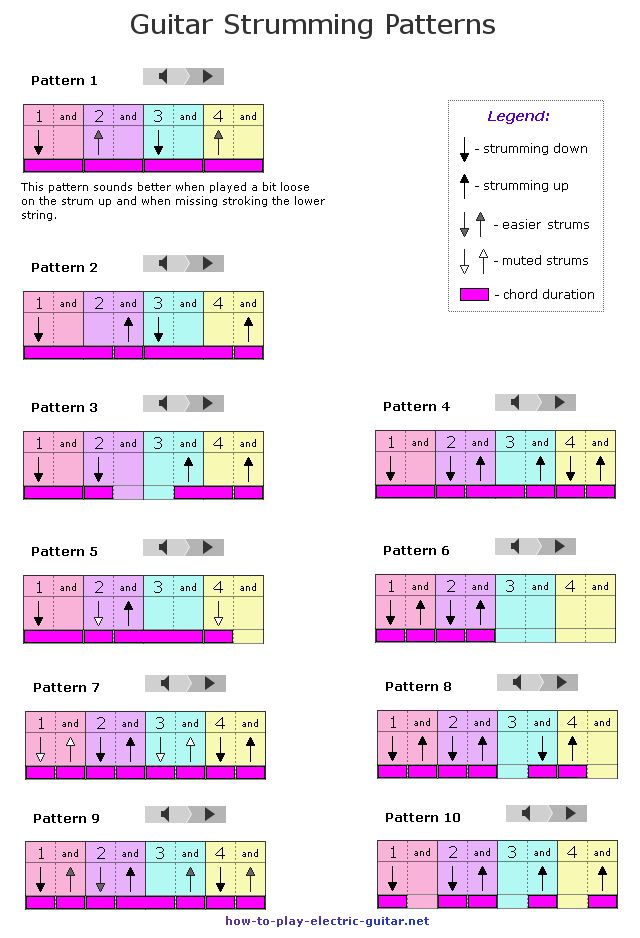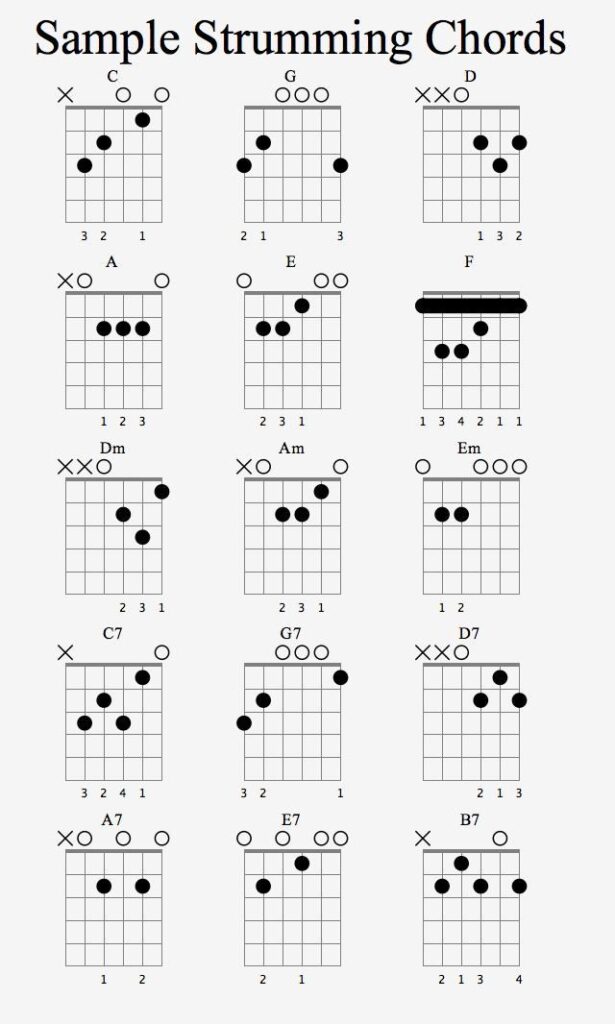Strumming is a fundamental technique that adds rhythm, texture, and dynamics to your guitar playing. Whether you’re accompanying yourself while singing, playing in a band, or simply jamming along to your favorite songs, mastering different strumming patterns can take your playing to the next level. In this guide, we’ll explore the basics of strumming patterns on the guitar and share tips for developing your own unique style.
Understanding Strumming Patterns:
A strumming pattern is a specific sequence of upstrokes and downstrokes that dictates the rhythm and feel of a song. Strumming patterns can vary in complexity, ranging from simple, straightforward rhythms to intricate patterns with syncopated accents. The key components of a strumming pattern include:
- Direction: Strumming patterns are typically indicated using symbols such as arrows pointing up (for upstrokes) and down (for downstrokes). Upstrokes involve strumming the strings from the highest-pitched string to the lowest, while downstrokes involve strumming from the lowest-pitched string to the highest.
- Timing: Each strumming pattern is played within a specific time signature, such as 4/4 (common time), 3/4 (waltz time), or 6/8 (compound time). The timing of your strums—whether they fall on the beat (downbeat) or between beats (upbeat)—will determine the overall feel of the pattern.
- Accentuation: Some strumming patterns include accents on certain beats or strokes to create emphasis and dynamics. Accents can be achieved by strumming more forcefully or by using a combination of strumming and muting techniques to highlight specific notes.


Common Strumming Patterns:
- Downstrokes Only: This is the simplest strumming pattern, consisting of consecutive downstrokes played on each beat of the measure. It’s commonly used in folk, rock, and punk music and provides a steady rhythm foundation.
- Down-Up Strumming: This pattern alternates between downstrokes and upstrokes, creating a more fluid and dynamic feel. It’s versatile and can be adapted to various musical styles, from pop and country to reggae and funk.
- Dotted Eighth-Note Strumming: This pattern introduces syncopation by emphasizing the off-beat eighth notes, resulting in a bouncy and energetic feel. It’s commonly used in blues, jazz, and Latin music to create a swinging groove.
- Sixteenth-Note Strumming: This pattern subdivides each beat into four equal parts, allowing for faster and more intricate rhythms. It’s often used in genres like rock, metal, and funk to create driving and percussive grooves.
Tips for Developing Your Strumming Skills:
- Start slow: Begin by practicing strumming patterns at a comfortable tempo, gradually increasing the speed as you become more comfortable.
- Use a metronome: Practice strumming patterns with a metronome to improve your timing and consistency.
- Experiment with dynamics: Experiment with varying the intensity of your strums to add dynamics and expression to your playing.
- Listen and learn: Study recordings of your favorite songs to identify different strumming patterns and techniques used by professional guitarists.
By exploring different strumming patterns and techniques, you’ll develop a versatile and expressive playing style that will enhance your musicality and creativity. So grab your guitar, experiment with different rhythms, and let your strumming patterns bring your music to life!



